| Author |
 Topic Search Topic Search  Topic Options Topic Options
|
DaveKamp 
Orange Level Access

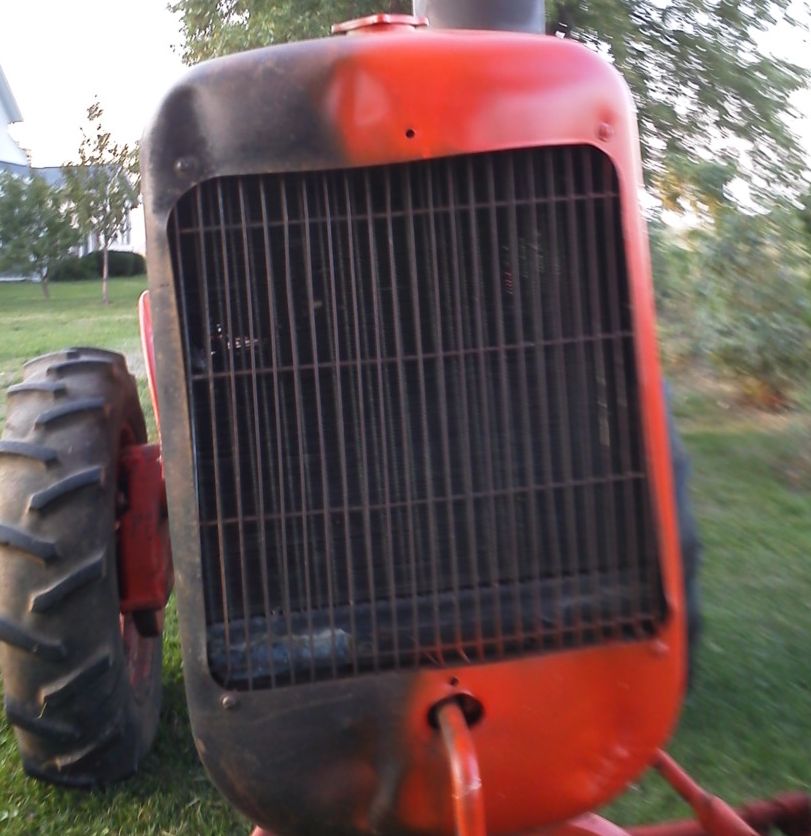
Joined: 12 Apr 2010
Location: LeClaire, Ia
Points: 6089
|
 Post Options Post Options
 Thanks(0) Thanks(0)
 Quote Quote  Reply Reply
 Topic: Good news, bad news... Topic: Good news, bad news...
Posted: 31 May 2010 at 12:07pm |
Well, the good news is, that I've found a perfectly good set of liners, pistons, and rods for my '37 WC unstyled. Bad news, is that they're coming out of my '50 WD. After working on it pretty hard two weeks ago, I got it together and running last week. It ran fine, but after working it a bit, I noticed that the head gasket didn't seal well... so I went back and retorqued the head again. Still, not right. Hand-cranking it revealed gurgling on the #3 cylinder, so I bought another gasket (Thanks AC Bill!), and popped it apart this morning, to find: 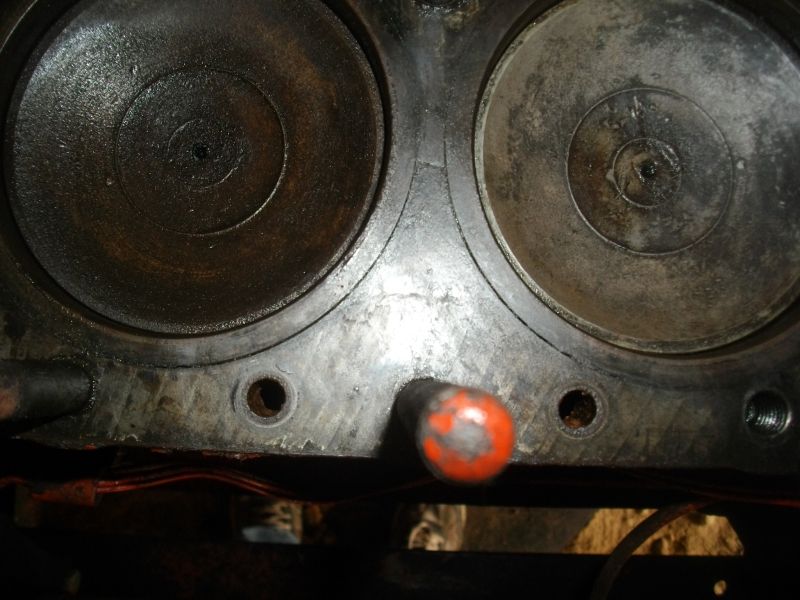 And while it looks like just a blemish, look at the mating surface of the #2 and #2 liners in the 4 o'clock and 7 o'clock positions, respectively... definately too much distortion going on there to 'recover' that. Normally, I'd consider other sealing options, but considering this repair: 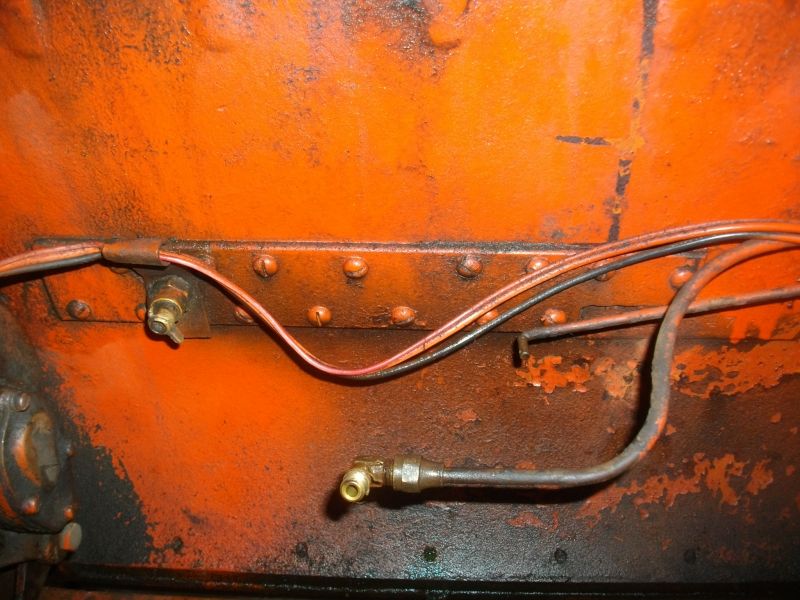 I'll just look for another engine, and use this one's reciprocating assembly for my '37.
|
 |
|
Sponsored Links
|
|
 |
Brian Jasper co. Ia 
Orange Level

Joined: 11 Sep 2009
Location: Prairie City Ia
Points: 10508
|
 Post Options Post Options
 Thanks(0) Thanks(0)
 Quote Quote  Reply Reply
 Posted: 31 May 2010 at 1:10pm Posted: 31 May 2010 at 1:10pm |
|
Is that a low spot you're pointing out? It's kind of tough to tell in a picture. The crack between the sleeves is pretty much normal. That plate added to the side of the block has to be one of the nicer crack repairs I've seen in a while.
|
|
"Any man who thinks he can be happy and prosperous by letting the government take care of him better take a closer look at the American Indian." Henry Ford
|
 |
Gerald J. 
Orange Level

Joined: 12 Sep 2009
Location: Hamilton Co, IA
Points: 5636
|
 Post Options Post Options
 Thanks(0) Thanks(0)
 Quote Quote  Reply Reply
 Posted: 31 May 2010 at 1:24pm Posted: 31 May 2010 at 1:24pm |
|
That's where a long bolt running between the sleevrs would pull the block together. Bottom to top in the first picture. Parallel to the head gasket.
Gerald J.
|
 |
DaveKamp 
Orange Level Access


Joined: 12 Apr 2010
Location: LeClaire, Ia
Points: 6089
|
 Post Options Post Options
 Thanks(0) Thanks(0)
 Quote Quote  Reply Reply
 Posted: 31 May 2010 at 4:51pm Posted: 31 May 2010 at 4:51pm |
|
A common problem? really?
Is the 'long bolt' tactic a common solution to this kind of thing? If so, can someone post a picture of that repair?
This is obviously distorting enough so that the cylinder liners aren't making an effective seal up top...
By the way, considering the freeze damage at the bottom, I'd think that the lower end of the block is probably suffering from a similar situation....
Edited by DaveKamp - 31 May 2010 at 4:54pm
|
 |
WEL(TN) 
Silver Level


Joined: 12 Sep 2009
Location: East Central IN
Points: 211
|
 Post Options Post Options
 Thanks(0) Thanks(0)
 Quote Quote  Reply Reply
 Posted: 31 May 2010 at 5:31pm Posted: 31 May 2010 at 5:31pm |
|
Too many cracks for me. I would get another block.
|
 |
BennyLumpkin 
Orange Level

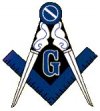
Joined: 22 Mar 2010
Location: Centre Hall, PA
Points: 2657
|
 Post Options Post Options
 Thanks(0) Thanks(0)
 Quote Quote  Reply Reply
 Posted: 31 May 2010 at 6:02pm Posted: 31 May 2010 at 6:02pm |
|
I could make you a deal on a WD45 engine...spun a rod bearing but its all there, and the block is in good shape from what I can see....only problem is Im in PA
|
 |
Larry B 
Orange Level


Joined: 11 Sep 2009
Location: charter oak Ia
Points: 386
|
 Post Options Post Options
 Thanks(0) Thanks(0)
 Quote Quote  Reply Reply
 Posted: 31 May 2010 at 8:03pm Posted: 31 May 2010 at 8:03pm |
|
i have a bare block fdrom a wd45 will sell cheap western Iowa.
|
 |
DaveKamp 
Orange Level Access


Joined: 12 Apr 2010
Location: LeClaire, Ia
Points: 6089
|
 Post Options Post Options
 Thanks(0) Thanks(0)
 Quote Quote  Reply Reply
 Posted: 31 May 2010 at 9:31pm Posted: 31 May 2010 at 9:31pm |
|
Yeah, Benny- PA is a long reach at the moment, Larry's closer, but I may be interested in both... if I can swing both (and manage some logistical challenges), you two guys MAY be a joint solution to BOTH problems (the WD's block, and the WC's liners). Check both your private messages!
|
 |
CTuckerNWIL 
Orange Level

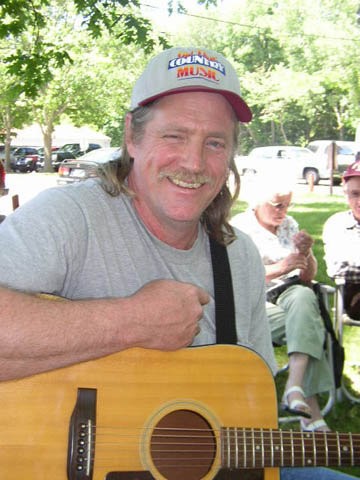
Joined: 11 Sep 2009
Location: NW Illinois
Points: 22825
|
 Post Options Post Options
 Thanks(0) Thanks(0)
 Quote Quote  Reply Reply
 Posted: 31 May 2010 at 9:48pm Posted: 31 May 2010 at 9:48pm |
|
Dave, the cylinder liners should stick up above the block .002 to .004 of an inch. The cracks in the webbing between cylinders has no effect on sealing the cylinder. If the sleeves don't stick up above the deck, you will have problems. If you use these sleeves in a different engine, check height of sleeves and replace the o-rings.There are probably more engines out there running with cracked webbing than without. If there are cracks down where the O-rings seal, you have a junk block.
Edited by CTuckerNWIL - 31 May 2010 at 9:51pm
|
|
|
 |
David Maddux 
Orange Level

Joined: 13 Sep 2009
Points: 2543
|
 Post Options Post Options
 Thanks(0) Thanks(0)
 Quote Quote  Reply Reply
 Posted: 31 May 2010 at 10:01pm Posted: 31 May 2010 at 10:01pm |
|
I found a block for my WD45 project, and it is the first block that I have ever seen that was not cracked between the top of the cylinders. So there is not a lot of them out there. Dave.
|
 |
DaveKamp 
Orange Level Access


Joined: 12 Apr 2010
Location: LeClaire, Ia
Points: 6089
|
 Post Options Post Options
 Thanks(0) Thanks(0)
 Quote Quote  Reply Reply
 Posted: 01 Jun 2010 at 1:50pm Posted: 01 Jun 2010 at 1:50pm |
|
Hmmm... well that's interesting.
I'm thinkin' that the lower patch was a freeze-crack. It's obvious that the top of the deck is not sealing, and the top ends of the liners are able to move. After torquing, and retorquing the heads, I was getting enough coolant in #2 and #3 so that it'd gurgle good on hand-cranking... crankcase has quite a bit of coolant in it now, too. Head is flat, and deck is flat on right and left sides, but the crack area is clearly not... one side is high. I suspect that the webbing down in the block is cracked from the same freeze, and the only reason why it was sealing before, is because it'd been fed about seven bottles of stop-leak... the crud holding the head onto the studs... was stop-leak. :-\
|
 |
CTuckerNWIL 
Orange Level


Joined: 11 Sep 2009
Location: NW Illinois
Points: 22825
|
 Post Options Post Options
 Thanks(0) Thanks(0)
 Quote Quote  Reply Reply
 Posted: 01 Jun 2010 at 5:47pm Posted: 01 Jun 2010 at 5:47pm |
|
Do the cylinder liners stick up above the deck at all? Coolant can get in the cylinders from the freeze plugs on top of the head leaking. The coolant ports and the cylinder liners is all that "seals" with the head gasket.
|
|
|
 |
mlpankey 
Orange Level

Joined: 13 Sep 2009
Location: Vols country
Points: 4580
|
 Post Options Post Options
 Thanks(0) Thanks(0)
 Quote Quote  Reply Reply
 Posted: 01 Jun 2010 at 5:51pm Posted: 01 Jun 2010 at 5:51pm |
|
I would machine the deck with the liners in it flat. Machine the head flat as well . Put a fel pro blue gasket on it and run the snott out of it.
|
 |
CTuckerNWIL 
Orange Level


Joined: 11 Sep 2009
Location: NW Illinois
Points: 22825
|
 Post Options Post Options
 Thanks(0) Thanks(0)
 Quote Quote  Reply Reply
 Posted: 01 Jun 2010 at 5:59pm Posted: 01 Jun 2010 at 5:59pm |
|
If the liners are floating around you couldn't mill them in place without clamping them down somehow. It could be done with a little extra setup time.
|
|
|
 |
mlpankey 
Orange Level

Joined: 13 Sep 2009
Location: Vols country
Points: 4580
|
 Post Options Post Options
 Thanks(0) Thanks(0)
 Quote Quote  Reply Reply
 Posted: 01 Jun 2010 at 6:01pm Posted: 01 Jun 2010 at 6:01pm |
Not trying to stirr no one up but honestly asking what brand of gasket uses the sleeve being up .002 to seal? I have used the victor renz and the fel- pro blue gaskets and both have a steel wound crush fire ring seal that measures 4.250 which catches the top ledge of the sleeves rather nicely .The reason I prefer the fel pro over the victor is the chance for water leaks around the pushrod holes .
|
 |
CTuckerNWIL 
Orange Level


Joined: 11 Sep 2009
Location: NW Illinois
Points: 22825
|
 Post Options Post Options
 Thanks(0) Thanks(0)
 Quote Quote  Reply Reply
 Posted: 01 Jun 2010 at 7:29pm Posted: 01 Jun 2010 at 7:29pm |
|
Sorry Mitch I was going from memory on the 2-4 thousandths,and it ain't been that good lately. I just looked it up and .004-.006 is what is recommended.
|
|
|
 |
mlpankey 
Orange Level

Joined: 13 Sep 2009
Location: Vols country
Points: 4580
|
 Post Options Post Options
 Thanks(0) Thanks(0)
 Quote Quote  Reply Reply
 Posted: 01 Jun 2010 at 8:03pm Posted: 01 Jun 2010 at 8:03pm |
|
yeah i just looked in my manual it said 2-4 anything over four would cause water seapage. I guess Ive been lucky seating them flush or milling them flush and letting the spiral wound metal fire ring be the crush seal like a flextallic gasket for instance.
|
 |
David Maddux 
Orange Level

Joined: 13 Sep 2009
Points: 2543
|
 Post Options Post Options
 Thanks(0) Thanks(0)
 Quote Quote  Reply Reply
 Posted: 01 Jun 2010 at 9:21pm Posted: 01 Jun 2010 at 9:21pm |
|
Personally, I wouldn't do all the work on the block that Mitch is suggesting with a freeze cracked block. A good block is not that hard to come by. However in the last few years I have learned to pay attention to what Mitch has to say. Dave.
|
 |
DaveKamp 
Orange Level Access


Joined: 12 Apr 2010
Location: LeClaire, Ia
Points: 6089
|
 Post Options Post Options
 Thanks(0) Thanks(0)
 Quote Quote  Reply Reply
 Posted: 01 Jun 2010 at 9:52pm Posted: 01 Jun 2010 at 9:52pm |
|
Well, I'm thinkin' there's a deeper structural crack, that the crack in the deck is just a tip-of-iceburg, as the two middle sleeves CLEARLY aren't sitting in the bores very well- I can get a fingernail in the gaps pretty easy.
I'm gonna end up pulling this one apart to look at the structural consequence, and if I'm going through that trouble, I'm gonna change the block out of spite, but once I get it apart, I'll clean it out and look-see if there's any structural point of damage. If I were to deck this thing, I'd still be pulling it out, and then jiggin' it up in the Cinci #3 (My BP's table travel isn't comfortably long enough)... so I'll let that go to some other day. It's obvious, though, that when the studs get tension, the deck is distorting. When I went through the torquing process, I could see leakage around the perimeter, and when I re-checked it, it started leaking worse, and the crankcase started turning milky-green. I hate it when that happens.
|
 |
mlpankey 
Orange Level

Joined: 13 Sep 2009
Location: Vols country
Points: 4580
|
 Post Options Post Options
 Thanks(0) Thanks(0)
 Quote Quote  Reply Reply
 Posted: 02 Jun 2010 at 5:14pm Posted: 02 Jun 2010 at 5:14pm |
|
Dave Maddux thanks for the compliment. Dave Kamp I can only go by what I saw in the pictures. So let me explain where my above statement came from and if you can afford a better block by all means take the conservative safe approach. The repair on the outside of the block makes me think as one prior had said that it was a freeze crack . Meaning the water was leaving the water jacket running outside to the ground. I don't think the crack on the outside by the smallness of the repair plate is large enough to deform the block. However I have never seen a mid 1950 block that when you got right down to checking the mains center line that the mains hadn't dropped from simply years of running. I do think all your water in oil problems are from the decks unevenness.
|
 |
DaveKamp 
Orange Level Access


Joined: 12 Apr 2010
Location: LeClaire, Ia
Points: 6089
|
 Post Options Post Options
 Thanks(0) Thanks(0)
 Quote Quote  Reply Reply
 Posted: 02 Jun 2010 at 5:25pm Posted: 02 Jun 2010 at 5:25pm |
|
Hi Mitch!
I believe you on the crack being common, and no doubt they do... er... 'season' a bit with the years... if the edges around the top of the sleeves looked stable, I'd consider planing it off, but regardless, the block would end up coming out and getting torn down... at that point, finding a different block would be the best plan, and once torn down for deeper inspection, I'd either find some other point of damage, and consider it condemned, or not, and consider it worthy of salvation. If it was simply the crack, and I had it jigged up in the Cinci, I'd probably braze it up, then mill flat and restore the sleeve radius, but With that patch, I probably wouldn't mess with it. I'm sure when I pull it apart, I'll find LOTS of stop-leak in there... probably enough to repackage and re-sell it...
|
 |
CTuckerNWIL 
Orange Level


Joined: 11 Sep 2009
Location: NW Illinois
Points: 22825
|
 Post Options Post Options
 Thanks(0) Thanks(0)
 Quote Quote  Reply Reply
 Posted: 02 Jun 2010 at 5:28pm Posted: 02 Jun 2010 at 5:28pm |
|
You may have to shear the stop leak off the sleeves to get them out if the head was that bad.
|
|
|
 |
mlpankey 
Orange Level

Joined: 13 Sep 2009
Location: Vols country
Points: 4580
|
 Post Options Post Options
 Thanks(0) Thanks(0)
 Quote Quote  Reply Reply
 Posted: 02 Jun 2010 at 5:39pm Posted: 02 Jun 2010 at 5:39pm |
Stop leak causes problems I wouldn't doubt that the pistons are also junk for the stop leak glued the rings to the lands so bad that to remove them will cause damage to the ring lands. I have seen blocks that have cracks running inside when the sleeves were removed that were within inches of the main bearings upper half that when the mains was line bored and the sleeves were replaced and seated with the top sleeve lip to the blocks recessed lip decked flat and torqued the structural integrity served well . I also don't want to sound as if I am pushing you toward using the block cause if I was you and didn't feel warm and fuzzy I wouldn't use it either unless it was a absolute have to. I am just basically telling you what I have found fooling with the 226 engine and ways I have worked through them.
Edited by mlpankey - 02 Jun 2010 at 6:27pm
|
 |
mlpankey 
Orange Level

Joined: 13 Sep 2009
Location: Vols country
Points: 4580
|
 Post Options Post Options
 Thanks(0) Thanks(0)
 Quote Quote  Reply Reply
 Posted: 02 Jun 2010 at 6:43pm Posted: 02 Jun 2010 at 6:43pm |
|
I think the next one I bore well I may let Darton do it (undecided) want have any block material between 1 and 2 ,3 and 4 . To see if we can get the bores even larger. I would like to have a bore fixture to flow a cylinder head bigger than 4 5/8 to see how much a piston displacement of 4.9 to 5 inch would make.
|
 |
CTuckerNWIL 
Orange Level


Joined: 11 Sep 2009
Location: NW Illinois
Points: 22825
|
 Post Options Post Options
 Thanks(0) Thanks(0)
 Quote Quote  Reply Reply
 Posted: 02 Jun 2010 at 6:48pm Posted: 02 Jun 2010 at 6:48pm |
|
Mitch, can the bores be offset left to right in order to go bigger without overlapping the liners?
|
|
|
 |
mlpankey 
Orange Level

Joined: 13 Sep 2009
Location: Vols country
Points: 4580
|
 Post Options Post Options
 Thanks(0) Thanks(0)
 Quote Quote  Reply Reply
 Posted: 02 Jun 2010 at 6:52pm Posted: 02 Jun 2010 at 6:52pm |
|
The bores in that picture have already been moved away from the camshaft . That little detail or lack of has caused alot of grieve for some when they go to install their camshaft and oh no want go happens.
|
 |









 Topic Options
Topic Options


 Post Options
Post Options Thanks(0)
Thanks(0)






